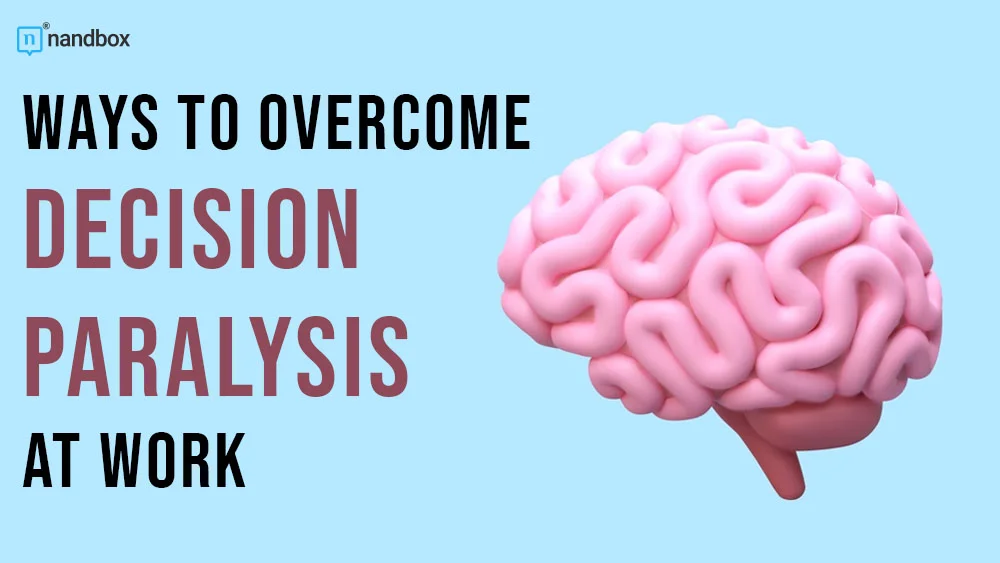It is easy to assume that employees who are provided with a wealth of information will find it easier to make decisions. However, with the potential for information overload, the opposite can also be true. Too much information leads to a reduced ability to filter the “good” information from the bad, resulting in decision paralysis.
In the world of tech, new opportunities, evidence, and data are produced every day. It is not surprising, then, that according to the IT Salary Guide from Motion Recruitment, leadership skills, and problem-solving and decision-making are critical skills for tech functions. Yet, many people working in IT experience decision paralysis at work.
What is Decision Paralysis?
The term “decision paralysis” was highlighted by psychologist Barry Schwartz in The Paradox of Choice: Why More is less. The basic premise is that, while most of us want choice, both in our home and work lives, too much choice can leave us overwhelmed, making us unable to make even the most simple decision. A simple example is that of lunch breaks. If you ask a teammate what time they would like to go to lunch, they may feel unable or uncomfortable to say. If, on the other hand, you offer them a choice of four-time spots, then they are likely to be able to pick one with ease.
Decision paralysis can be annoying or frustrating when it comes to decisions such as when to go for lunch or who to ask for support on a larger project. But for more significant work-related tasks and “wicked” problems (those that may not necessarily have the right answer), decision paralysis can be potentially catastrophic.
The Impact of Decision Paralysis
It goes without saying that decision paralysis can lead to missed opportunities and reduced productivity. But it can also impact creativity, according to one study. For coders, designers, and project managers, this lack of creativity can be a serious problem. This makes them less able to work innovatively to identify and address potential problems. In one study by Oracle Analytics of more than 14,000 employees and leaders across 17 countries, respondents said that an inability to make decisions has resulted in increased anxiety, missed opportunities, and unnecessary spending. Longer term, the study found, that decision distress or decision paralysis contributes to organizational inertia.
Overcoming Decision Paralysis
Decision paralysis is something that can affect anyone at any stage of the organizational hierarchy. The Oracle Analytics study mentioned above shows that 85% of business leaders have suffered from “decision distress.” It is the feeling of regret or guilt regarding a decision that they made within the past year. 86% said that the volume of data that they receive makes it more complicated to make decisions, both personally and professionally.
While it is not possible to blind employees and business leaders to the vast amounts of data available, it is possible to implement four steps that will help to reduce or remove decision paralysis and, latterly, decision distress.
1.) Implement Decision Deadlines
For people struggling to make a decision, committing to a deadline is a great place to start. This will, of course, need to be assigned on a case-by-case basis, but it can help to have some areas for consideration as standard to help you make this first (and crucial!) decision. If you notice that you are struggling to, or delaying, making a decision, recognize the potential of decision paralysis. Look at the hard deadlines in place and create your deadline before that. Work backwards to see what you need to do, and when, and add slots to your calendar so that you have dedicated time to get the job done.
2.) Filter Out The Choices
If you are faced with a range of possibilities, start by having a quick thought about your desired outcomes and your potential choices. Quickly discard any that are not a great fit, leaving yourself with a shortlist of options. This shortlist will be much less daunting and is likely to induce anxiety.
3.) Experiment With Rapid Decision-Making
Overthinking is a decision-maker’s downfall. It can take you down a wormhole of options, permutations, combinations, and—the decision-maker’s enemy—the what-ifs. If you are struggling to make a decision, set aside a few minutes a day where you make rapid-fire micro-decisions.
4.) Rule Out, Rather Than Rule In
How often are you paralyzed to make a choice, but when someone makes it for you, you know that it is not the right one? Using the rapid-fire approach, you can make a quick decision before taking a step back and analyzing whether or not it is the right one.
5.) Apply a Decision-Making Framework
By far the most important thing you can do to prevent decision paralysis is to apply a decision-making framework. This framework will provide you with precious parameters to work within, preventing the feeling of anxiety and overwhelm that causes paralysis.
What decision do you need to make? Identify the problem, your ideal outcome, and your measure of success. What information do you need in order to succeed? Has anyone had a similar problem before? What was the decision, and what was the outcome? Could it have been improved? What other solutions are available? Have other solutions been tried before? Are different departments doing things differently? Assess the options. Armed with two or more decisions, weigh up the pros and cons. You could utilize a SWOT analysis or decision matrix to help assess the best course of action. Make a choice. Take appropriate action. Armed with your decision, pass it on or up, and make sure that the appropriate action is taken.
Review and reflect. This is an important part of the decision-making framework that is often overlooked. There can be a tendency to want to move on to the next task! Take the time to assess your processes and the outcomes so that you can use your feedback to help inform future decisions.
Overcoming decision paralysis can be challenging, but with time, the process of making decisions within a robust, tried-and-tested framework can help you achieve efficient, considered decision-making as well as model best practices for your colleagues both within and outside of your department.





